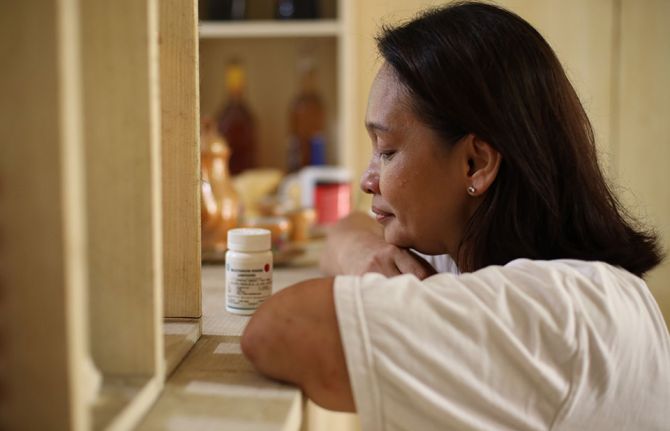
Feature Story
Applying evidence for results: How can we effectively scale up HIV treatment?
10 June 2011
10 June 2011 10 June 2011
Agnes Binagwaho, Minister of Health, Rwanda at Ministerial Round Table Addressing Access: Taking Programmes to Scale. UN Headquarters, NYC, on June 9, 2011.
Credit: UNAIDS/B. Hamilton
With unprecedented high level participation at this week’s UN General Assembly Meeting on AIDS, with more thirty Heads of State and Government and Vice Presidents and some 100 ministers in attendance. A special side event was convened for the ministers to come together to share their experiences across the new landscape and outlook for HIV treatment, including treatment for prevention. It brought together ministers from a wide spectrum of sectors—including health, justice, social development and labour—with members of civil society, to exchange a diversity of country experiences.
Panellists in the session included Aaron Motsoaledi, Minister of Health, South Africa; José Angel Cordova Villalobos Secretary of Health, Mexico; Marijke Wijnroks, AIDS Ambassador, Netherlands; Ruben Pecchio, Director REDLA+ (Network of People Living with HIV, Latin America) and UNAIDS Executive Director Michel Sidibé.
We must consider the investments we make now as down-payments that will reduce costs later
UNAIDS Executive Director Michel Sidibé
Treatment for prevention
The panel drew attention to the recent results of the HPTN 052 study announced by the United States National Institutes of Health which demonstrated that if an HIV-positive person adheres to an effective antiretroviral therapy regimen, the risk of transmitting the virus to their uninfected sexual partner can be reduced by 96%.
Involvement of people living with HIV essential
In the discussion, moderated by Al Jazeera television host Riz Khan, the participants highlighted the need to involve people living with HIV in treatment and prevention programmes. “Testing needs to be available to everyone—people living with HIV need to know their status as early as possible to enable them to effectively engage in prevention. ‘Positive prevention’ must be at the centre of prevention efforts and treatment for prevention plays a critical role,” said Mr Pecchio.
Addressing stigma in the context of treatment
According to Secretary of Health of Mexico, José Angel Cordova Villalobos, Mexicohas created a financial vehicle to guarantee sustainable access to treatment over long term. “But we must also work to strengthen education to fight stigma and discrimination and homophobia and to increase people’s willingness to get tested,” said Mr Cordova Villalobos.
With the largest number of people living with HIV in the world, at 5.6 million, South Africa also has the largest antiretroviral treatment programme in the world. The country has also recently launched a national HIV testing campaign in which 12 million South Africans have been tested for HIV between April 2010 and June 2011.
We must also work to strengthen education to fight stigma and discrimination and homophobia and to increase people’s willingness to get tested
José Angel Cordova Villalobos, Secretary of Health of Mexico
“South Africa has no option but to scale up treatment. As testing is scaled up, more people learn their status, and given the evidence of its impact on prevention, this is an important approach,” said Aaron Motsoaledi, Minister of Health of South Africa.
Recent developments in scientific understanding and approaches were highlighted and shown how they can be seen as “game changers.” Country representatives discussed how they can apply this information to further scale up HIV treatment programmes. New information about the prevention benefits of HIV treatment provides an opportunity for increased collaboration within the HIV response.
Investment needs
According to the new UNAIDS investment framework published in the Lancet ahead of the High Level Meeting on AIDS, a relatively small amount of additional money would be required to reach the US$ 22 billion needed for universal access to HIV treatment by 2015. However new data indicate that international investments in AIDS appear to be falling for the first time in 10 years.
“We must consider the investments we make now as down-payments that will reduce costs later,” stressed Mr Sidibé. “It is unacceptable that we have the evidence of the incredible effectiveness of treatment for prevention, yet nine million people living with HIV still don’t have access to it.“



